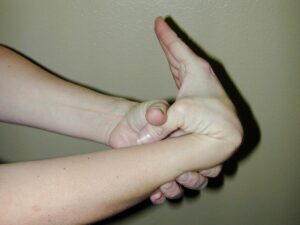Benign hypermobility joint is a condition that can be quite debilitating for those who suffer from it. Hypermobility refers to the looseness and fragility of the joints, which can make them more susceptible to injury. For people with benign hypermobility joints, everyday activities can become difficult and even painful. In this blog post, we will explore the physical therapy guide to benign hypermobility joints and how you can start treatment right away. We will also outline the various treatments available and discuss the potential risks and benefits of each.
Contents
What Is a Benign Hypermobility Joint?

Benign hypermobility joint is a condition that is associated with hyperextension of the knee and ankle joints. Individuals affected by this condition typically have a higher-than-average range of motion (ROM) in these joints, as well as a greater ability to move them through their full range of motion.
The signs of benign hypermobility joint depend on the individual’s underlying medical condition and may include:
-A higher-than-average range of motion (ROM) in joints such as the knee, ankle, and hip
-Greater ease of movement through the full range of motion
-A feeling that the joint is “loose” or “jello”-like
While benign hypermobility joint may seem like nothing more than a benign physical anomaly, it can lead to numerous health problems if not treated. Sufferers of this condition are at an increased risk of developing osteoarthritis, sports injuries, and even fractures due to overuse or injury. Treating benign hypermobility joints involves strengthening the muscles surrounding the joints and restoring balance to the overall system.
Physical Therapy For Benign Hypermobility Joint
There is no one-size-fits-all approach to treating benign hypermobility joint syndrome (BHJS). Each patient will require a customized treatment plan based on their symptoms and medical history. However, many of the same treatments used to treat more common conditions, such as hip or knee arthritis, can be effective in treating BHJS.
Physical therapy may be helpful for benign hypermobility joints. Physical therapy may include stretching, range of motion exercises, and strengthening exercises. A physical therapist can help you learn how to move your joints more effectively and safely.
People may prefer using this type of therapy over medications, as there are no known side effects from physical therapy. However, people should always speak with their doctor before starting any physical therapy program.
Types of Physical Therapy For Benign Hypermobility Joint

There are many types of physical therapy for benign hypermobility joints, including:
Mechanically Assisted Therapy (MAT)
There is increasing evidence that mechanically assisted therapy (MAT) can be beneficial for people with benign hypermobility syndrome (BHS). MAT typically involves the use of devices or exercises to improve joint movement and function. Devices used in MAT include mini-scooters, ankle tappers, and foot exercisers.
The effectiveness of MAT for BHS has been shown to vary depending on the device used, but studies have found that treatment with MAT can generally improve joint range of motion (JRM), muscle strength, and quality of life. Additionally, MAT may help reduce the risk of falls in people with BHS.
Despite its potential benefits, there is some caution against using MAT in people with BHS due to the potential for injury. It is important to consult with a physical therapist who is experienced in using MAT for BHS before starting treatment.
Pneumatic Compression Therapy (PCT)
Pneumatic compression therapy (PCT) is a type of physical therapy that is used to treat patients who have benign hypermobility joints. PCT is a temporary relief for pain and swelling in the joints. It works by using air pressure to compress the tissues around the joint. This pressure helps to reduce inflammation and pain.
PCT is usually done on an outpatient basis. It is usually started by inflating a cushion on the floor or in a chair. The patient then lies down on the cushion and allows the therapist to apply pressure to the affected joint. The therapist will continue to apply pressure until the patient has achieved relief from pain and swelling.
To use PCT on the benign hypermobility joint, you’ll first need to measure your Joint mobility score (JMS). Your JMS is based on how far you can move each joint in both directions. After you’ve measured your JMS, you’ll need to determine which joints require treatment. To do this, you’ll need to position the affected joints into their neutral positions and then use the Joint Mobility Score Chart to find the position that corresponds with your JMS.
Exercise Prescription
There is no single answer to this question as the best exercise prescription for people with benign hypermobility will vary depending on their condition and symptoms. However, general guidelines that can be followed when prescribing exercise for people with benign hypermobility include:
Start with low-impact exercises such as walking and stationary cycling, which are gentle on the joints and do not require a lot of strength or stamina;
Add more challenging exercises gradually as the person becomes more comfortable and confident;
Make sure to always consult with a physician or physical therapist before starting any type of exercise program due to the potential risks associated with overuse or improper training.
Manual Therapy
Manual therapy is a form of treatment that uses physical manipulation to improve function and reduce pain. Also, Manual therapy can be used for a variety of conditions, including benign hypermobility joint (BHJ) syndrome.
Manual therapy is an effective treatment for BHJ syndrome because it helps to improve function and reduce pain. Treatment goals may include improving the range of motion, reducing inflammation, and restoring strength and mobility. Manual therapy may be used in combination with other treatments, such as exercise programs or medication.
Most manual therapies used for BHJ syndrome are focused on the lower extremities. Techniques may include stretching, mobilization, massage, strengthening exercises, and heat treatment. Manual therapists often use devices such as resistance bands, balls, and sticks to help treat various conditions.
Benefits of Physical Therapy For Benign Hypermobility Joint

Physical Therapy for Benign Hypermobility Joint can provide relief from various symptoms associated with the disorder, such as pain, limited range of motion, and stiffness. While the benefits of PT for benign hypermobility joint are wide-ranging, some of the most notable benefits include:
Improves Quality of Life
There is no one-size-fits-all answer to improving the quality of life for people with benign hypermobility syndrome (BHJS), but physical therapy can play an important role in helping individuals feel more comfortable and able to participate fully in their lives.
Physical therapy has been shown to improve the overall quality of life for people with BHJS. This includes improvements in mobility, function, and self-esteem. Physical therapists work together with patients to develop a personalized treatment plan that targets their individual needs. This often includes exercises and stretching that can improve joint flexibility and range of motion.
Helps To Relieve Pain
Pain is a common symptom of BHJS. Physical therapy can help to relieve this pain by improving joint stability and alignment. This can help to take pressure off of the joints, which can lead to reduced pain levels. Physical therapists will also often teach patients how to properly use ice and heat to help manage their pain.
Reduces Inflammation
Inflammation is another common symptom of BHJS. Physical therapy can help to reduce inflammation by promoting blood flow and circulation. This can help to speed up the healing process and reduce swelling. Physical therapists may also use massage or other manual therapies to help reduce inflammation.
Improves Joint Range of Motion
BHJS can often cause the joints to become stiff and limited in their range of motion. Physical therapy can help to improve joint range of motion by stretching and strengthening the muscles around the joints. This can help to improve flexibility and reduce stiffness.
Increases Strength and Endurance
BHJS can often cause weakness and fatigue. Physical therapy can help to increase strength and endurance by working with patients to develop an exercise program that is tailored to their needs. This program may include activities such as walking, biking, or swimming.
Makes Everyday Activities Easier
BHJS can make everyday activities such as dressing, bathing, and cooking difficult. Physical therapy can help to make these activities easier by teaching patients how to properly use their joints and muscles. This can help to improve coordination and reduce pain.
Helps To Prevent Further Joint damage
Physical therapy can also help to prevent further joint damage by improving joint stability and alignment. This can help to take pressure off of the joints and reduce the risk of further injury. Physical therapists will also often teach patients how to properly use ice and heat to help manage their pain.
Each person’s experience with physical therapy for BHJS will be unique. However, the above benefits are some of the most commonly reported by patients.
Steps To Take Before Physical Therapy For Benign Hypermobility Joint

If you are living with hypermobility, then you may be wondering what steps you can take to improve your quality of life. Here are some tips to get started:
1. Educate Yourself: The first step is to educate yourself about the condition. There is a lot of information out there, so it can be difficult to sift through it all. Google is a great resource for finding more information on the topic.
2. Optimize Your Routine: One of the most important things you can do is optimize your routine. Make sure that you are getting enough exercise and rest. This will help to strengthen your muscles and reduce your pain symptoms.
3. Seek Professional Assistance: If you find that these measures don’t provide the relief that you desire, then consider consulting with a Physical Therapist. A therapist can help you to develop an individualized plan that will best suit your needs.
4. Take Matters Into Your Own Hands: If all else fails, there is always the option of self-help. Try to find stretches and exercises that work for you and make sure to do them regularly.
If you are living with hypermobility, then it is important to take steps to improve your quality of life. Physical Therapy can help you to achieve the relief that you need.
Conclusion
If you are one of the estimated millions of people who suffer from benign hypermobility joint, then you know that it can be a debilitating condition. But don’t despair! There is hope, and with the right physical therapy treatment, you can manage your symptoms and improve your quality of life. In this guide, we have outlined some key points to keep in mind when seeking out physical therapy for BHJ. We hope that reading this guide has helped you find the right therapist and obtain the best possible treatment for your condition.
Physical Therapy help patients recover from pain. If you’re experiencing Back pain, Shoulder pain, Knee pain, Neck pain, Elbow pain, Hip pain, or Arthritis pain, a physical therapist at MantraCare can help: Book a physiotherapy session.


